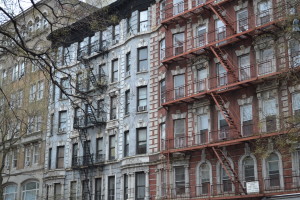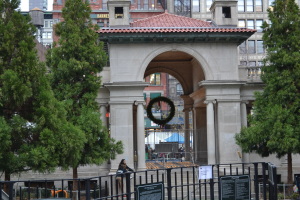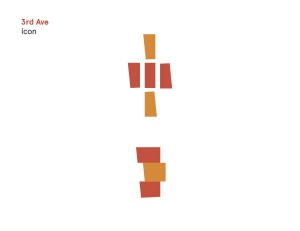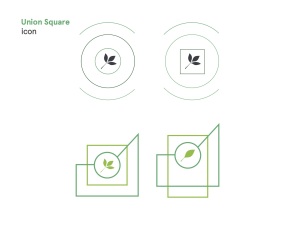Here is my quick indie project.
Category Archives: Uncategorized
RecitoRide – Quick Indie Project by Anupma
I re-imagined Recito, (a project i worked in Crafting interaction class, last year) as a crowd-sourced system installed in NYC subway station where the content-consumed by the riders feeds into the Recito system. This system monitors and recommends popular content to the riders at the station kiosks. People can get the content (as audio logs/ offline reads) on their phones using ‘touch and scan’ technology.
Read more about this project here.
Filed under Quick Indie Project, Uncategorized
How to get rid of our “Third Places” and thoughts on: Our Vanishing “Third Places”
“An electronically-operated garage door out front and a privacy fence out back afford near-total protection from those who, in former days, would have been neighbors.”
I think that separating ourselves from the outside world is in vogue. From immersing ourselves to our systematic daily routine (and not looking out) to grabbing with our eyes any digital device screen (and reducing to a minimum our peripheral vision) we create “bubbles” and occupy them at all times. If that process is increasing by the minute, it means that the demand for “Third Places” is decreasing and of course the customer is always right.
“The flaw in much of today’s residential land use pattern — all space is used up and there’s no provision for a community life.”
I think part of the flaw is a response to how our “home-to-work-and-back-again shuttle” works: mainly as a car commute. Therefore, that need was answered by a city-grid planned around vehicles with a very high percentage of the public property dedicated to vehicular circulation and the rest to pedestrian circulation only.
If you want to get rid of our few “Third Places” simply do nothing or move as far away from work as possible.
On the other hand, if you want them back follow what advanced societies do:
“THE CITIES OF THE FUTURE ARE PEOPLE-FRIENDLY CITIES” (http://denmark.dk/en/green-living/bicycle-culture/the-cities-of-the-future-are-people-friendly-cities/)
I think the best way to try to rescue or create public “Third Places” might be to transform our sidewalks from being circulation-paths to a series of bay-spaces or plazas by lowering the percentage-area that is currently assigned to cars.
“Third places are nothing more than informal public gathering places.”
The moment “Third Places” appear people will start using them.
About six years ago New York City created a “Third Place” in Times Square as a series of plazas that potentiated the place to become an actual square. In my opinion an excellent move. It helped near by businesses and attracted many interesting people like “The Desnudas”.
“The Desnudas of Times Square, Topless but for the Paint” (http://www.nytimes.com/2015/08/16/nyregion/the-desnudas-of-times-square-topless-but-for-the-paint.html)
Unfortunately, if you want to get rid of our few “Third Places” simply become one.
“Mayor de Blasio Raises Prospect of Removing Times Square Pedestrian Plazas” (http://www.nytimes.com/2015/08/21/nyregion/mayor-de-blasio-raises-prospect-of-removing-times-square-pedestrian-plazas.html)
Filed under Third Places, Uncategorized
Thoughts on Ray Oldenburg’s article “Our Vanishing ‘Third Places’”
Filed under Third Places, Uncategorized
Welcome 2015 Public Interfacers
Hello-
Hopefully you all have usernames and passwords for this blog.
I am looking forward to meeting each of you and exploring methods of designing for pubic space. The syllabus has been mostly updated if you want a sneak preview.
See you all Tuesday the 8th at 6pm.
-Michael
Filed under Uncategorized
Final Presentation Schedule
6:05 – 6:20 Park Talk
6:30 – 6:45 Jared
6:55 – 7:10 Flux
7:20 – 7:35 Break
7:50 – 8:05 Malm
8:15 – 8:30 Tapper
Filed under Uncategorized
Team Jared Final Prototype
We when out to Union Square and 3rd Ave to interview people and collect media, pictures and video. Our goal was to collect information from each area to influence the content we are making within the subway.
Area right by the 3rd Ave. stop.
The north end pavilion in Union Square.
Patterns and color schemes for 3rd Ave’s subway stop.
Patterns and iconography for Union Square.
Possible Audio:
3rd Ave’s subway stop: 3rd Av
Union Square: 14thUS
.
Filed under Uncategorized
Team ParkTalk – DHNS
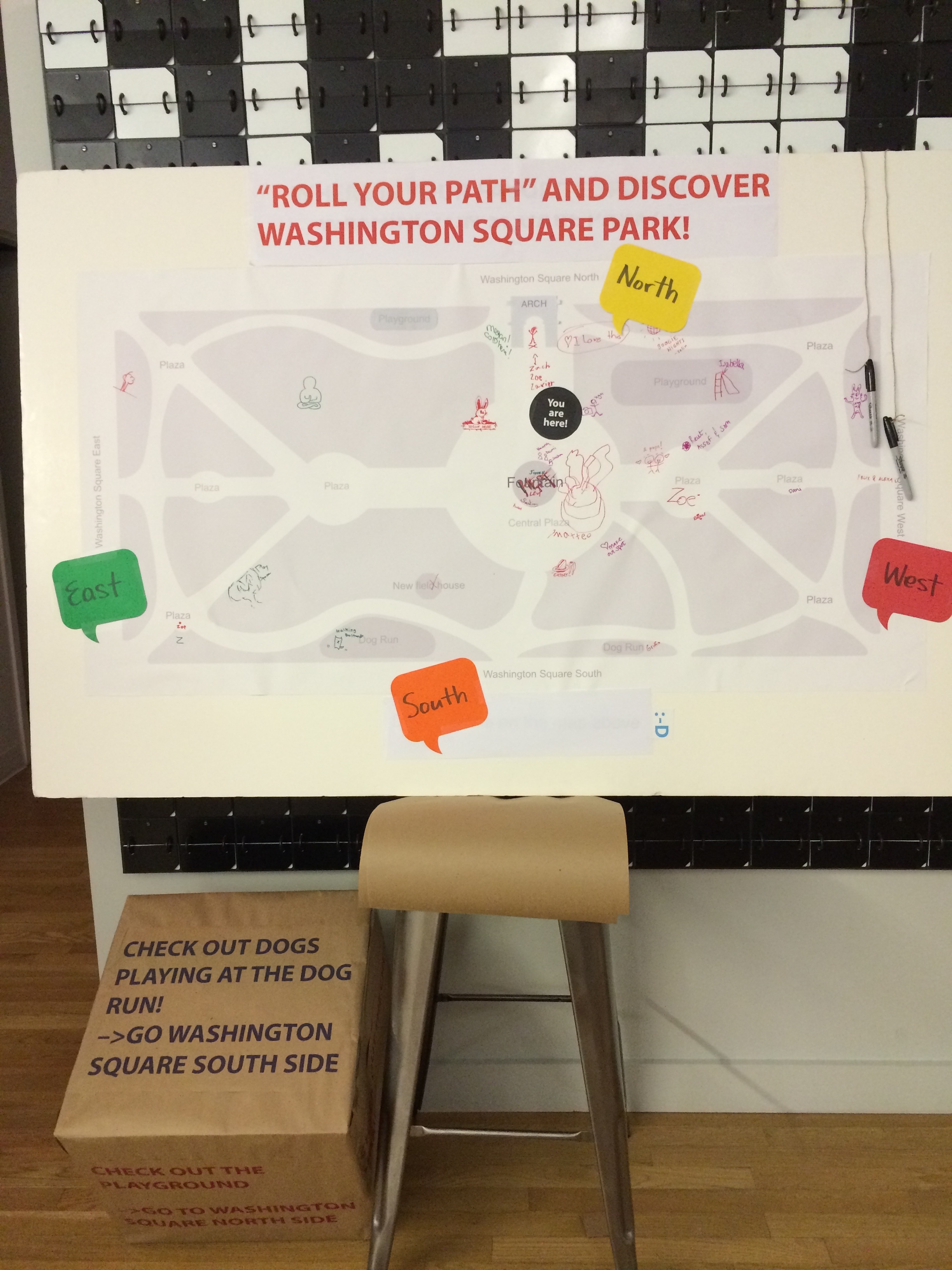
- A drawn ‘How to’ example could have been helpful for today’s prototype.
- Dice should have possibly looked like a real dice. Our dice prototype looked almost like just a big craft box.
- Maybe creating your new path with the dice would be more fun instead of pointing out to just one direction. (Or reward something?)
-
The cube with the prompt . . . not sure if pole knew how to engage with it? Did we need another prompt indicating to “roll the cube”.
-
Was the cube suggestive enough as a dice to have that game aspect
-
Was the set up inviting enough?
-
Were there too many other activities at the park that competed w/our installation?
-
Did we have it at the right location or faced the right way that allowed users to see better and allow easy engagement.
Filed under Uncategorized
Team Jared: Projection Prototype
Our focus over the week has been using projection to display content. During IxD open house, we projected pictures of people within the IxD space and let others participate by tagging their photos of IxD via Twitter and Instagram. We curated the pictures and then projected them onto the wall. Fun stuff. This helped solidified that content is what truly connects us and opens us to engage in it.
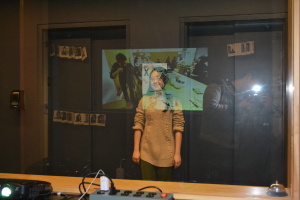
Then we wanted to show specific content surrounding the area of a stop. We chose the N/R stop on 23rd under the Flatiron building and next to Madison Sq. Park. We put together a looping deck of Flatiron and Madison Sq. Park imagery and then projecting that on the subway’s walls as people passed by.
Sadly, the battery to power the projector failed on us before anyone could engage with it.
Setting up.
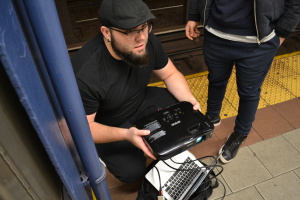
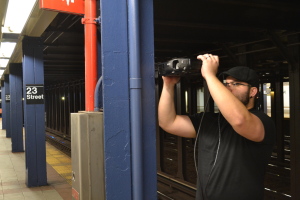
Right before the battery failed.
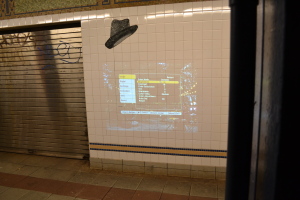
But here are some concepts of what we would have liked to happened …
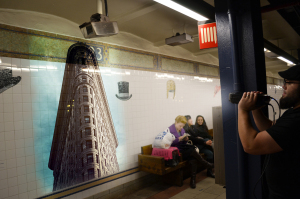
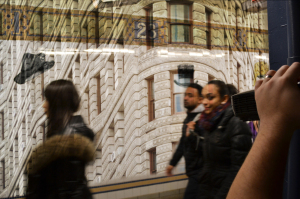
Filed under Uncategorized
Team Jared: UX Diagram
We want to engage in a few touch-points within the subway to give riders a better sense of the actual place at a stop while riding underground. This week we plan on tackling two of the touch-points, the subway walls via projection and screen display signage.
Here is two user journeys plotted out that give examples to each on the same trip.
Filed under Uncategorized

